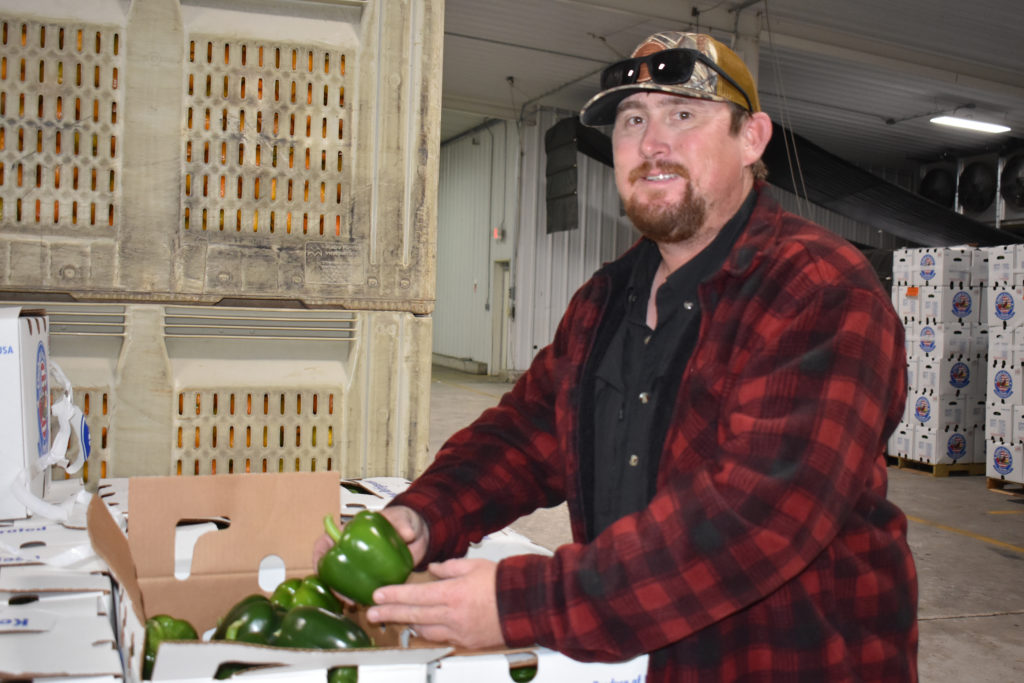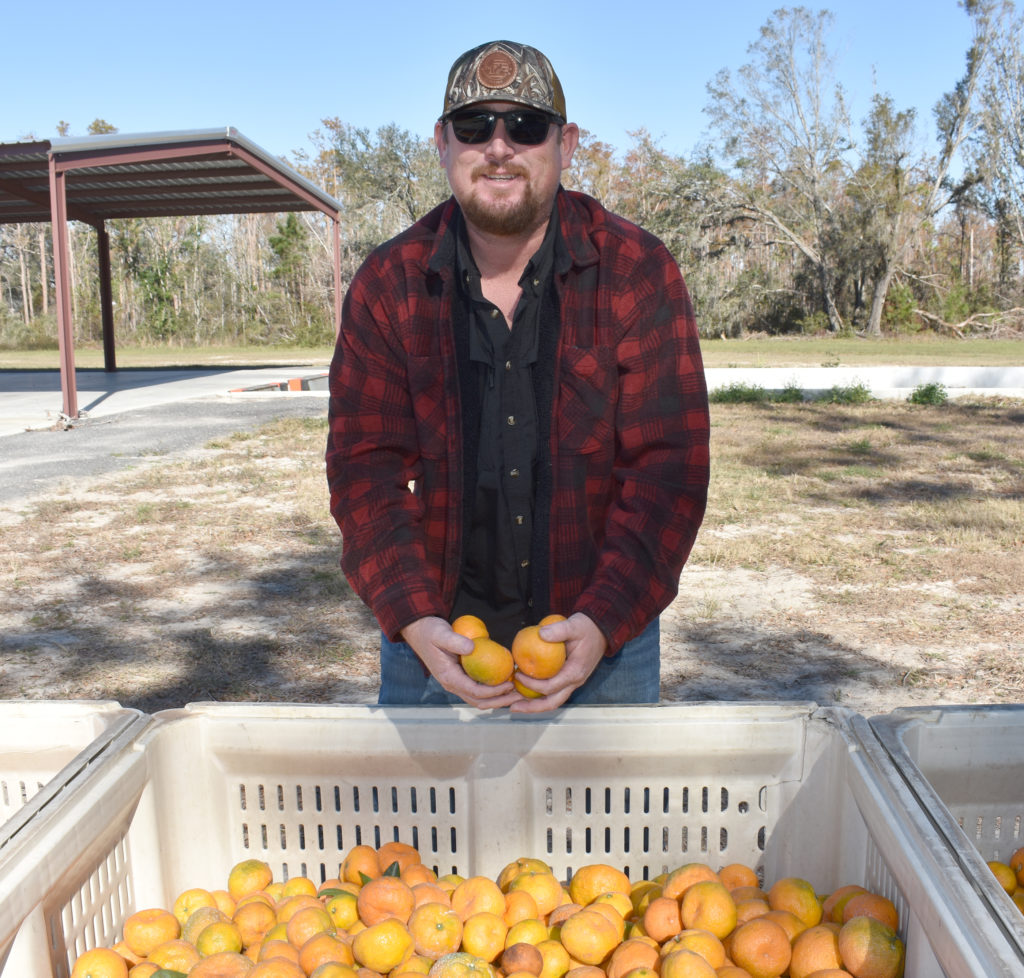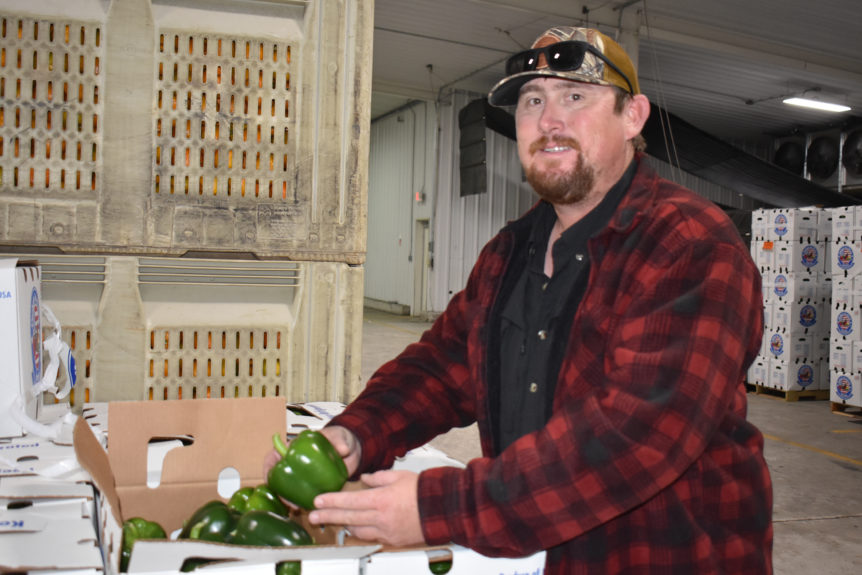
By Clint Thompson
If your farming operation isn’t growing, it’s shrinking. That’s the Corbett family motto that’s been passed down from generation to generation. The philosophy serves as the basis for Justin Corbett, who operates Corbett Brothers Farms in Lake Park, Georgia, with his brother Jared.
While some specialty crop farms are operating in survival mode due to increased input costs and seasonal imports, Corbett Brothers is thriving and expanding.

“We’ve steadily increased over the past few years,” says Corbett. “When I graduated high school, we were probably growing 200 to 300 acres per year. Now, farm-wise, we’re up to about 4,000 acres.”
The brothers founded the farm in 2018. They produce bell and specialty peppers, squash, cucumber, eggplant, sweet corn and watermelon. Production is in five counties in South Georgia and North Florida.
The brothers believe spreading risk over a variety of crops is important to sustainability. And it can open the door to new opportunities.
“You’ll have winners and losers, and hopefully at the end of the day it’s a profitable year,” Corbett says. “With the vegetable operation, you’re always looking to evolve, looking to see where you can grow something to help the farm. That comes down to looking at customers’ needs. If we have an opportunity to expand with something, we’ve always looked to go with opportunities like that.”
The farm includes a packing and cooling facility that spans more than 175,000 square feet. The brothers’ father established it in 2008 prior to the founding of the farm. The facility is centrally located in Lake Park, Georgia, near farms that operate in South Georgia and North Florida.
Scaling Up Citrus
While Corbett Brothers is mostly known for its bell pepper production, its expansion extends beyond vegetables to include citrus. The brothers grow satsumas, shiranui, Hamlin oranges, grapefruit and Sugar Belles. It’s part of the operation’s plan to expand and diversify its citrus crop portfolio.
“The citrus industry in North Florida and South Georgia is definitely growing. It’s starting to be enough volume now where I think it’s getting more recognition from retailers and food service,” Corbett says. “Five years ago, it was small volume. We didn’t have a lot of supply, so it was hard to sell buyers on the idea that I want to supply your store with 15 truckloads a week in this 10-week window here. But there’s enough volume now where it’s a promotable volume. A lot of folks are really interested in it.”
The added interest means Corbett Brothers will likely expand its 250 acres of citrus in the future.
“It’s the chicken and egg thing; you’ve got to have the product to sell, but you’ve got to have the market to sell it to. We’re steadily growing our customer base, trying to introduce our product to everyone that we can,” Corbett says.
Trade and Labor
The success of the farm doesn’t mean it is immune from the challenges that threaten specialty crop growers across the Southeast. Trade and labor remain the two biggest threats to fruit and vegetable farmers staying sustainable.
“With all our vegetable crops, we have problems with imports. You’ll have times where it will get shipped in from overseas or south of us, cheaper than our cost of production,” Corbett says. “Our cost of production is steadily going up. Labor is going up another 10% next year. Labor is our No. 1 cost by far with anything that we do.”
Corbett Brothers employs approximately 600 workers during its peak season. But with a 30% increase in the H-2A program’s adverse effect wage rate (AEWR) over the last three years, labor costs continue to be a point of contention for Southeast farmers.
The latest AEWR increase that took effect in Georgia increased H-2A labor wages by approximately 9%. Neighboring states also are seeing significant increases.
“It (AEWR) outpaces inflation, and it outpaces every indicator that any of our growers have to look and see what wages are,” says Chris Butts, executive director of the Georgia Fruit and Vegetable Growers Association. “It doesn’t make sense, and we’ve gone to these (federal) agencies and asked for explanations. We still don’t have a thorough understanding of how the Farm Labor Survey is used and how that data is used to come up with the AEWR. All our growers know is to expect close to a double digit increase every year with no explanation as to how we got here.
“In Georgia, I think we had 44,000 H-2A workers this year. You’re talking hundreds of millions of dollars with zero explanation and seemingly zero correlation with what’s happening with the economic realities in our rural communities … It’s unsustainable.”
“I understand increases. Everything increases, but we need a controlled pattern,” says Corbett. “Ten percent every year is a lot to overcome at one time. It’s tough for us to plan what it’s going to cost to grow a crop. It’s tough to keep coming back to folks and saying, ‘I need another 50 cents per box,’ just to be where we were last year in terms of returns. Averages on prices have gone up a little, but they haven’t kept up with the costs of production. We’re not selling stuff for much more than what daddy was back in the 90s.”
Hurricane Hits
Farm challenges also include natural disasters. Lowndes County has been hit hard for the past two years with hurricanes, capped by Helene last September. Corbett Brothers lost two-thirds of its fall vegetable crops. Buildings were damaged, and irrigation pivots were turned over.
“This was the worst thing our area has ever seen,” Corbett says. “We had Idalia (in 2023) and that was the worst thing that anyone around here had ever seen. I never thought we would ever see anything close to that magnitude again. Then Helene comes in and was 10 times worse.”
A Different Time
Corbett can remember the good ol’ days of when his parents farmed 1 acre of bell peppers. That was back in 1987, a time when farmers were prioritized, import volume was significantly less and domestic labor was plentiful.
Times have changed. Like other Georgia vegetable farmers, Corbett has his share of restless nights. They center mostly on sustainability. Is the farming operation that his parents started and the one he and his brother now operate going to be sustainable enough for their children to inherit one day?
“I would love nothing more than to see my kids continue this on like Jared and I have done from what our parents and grandparents started with the family farm generations ago,” Corbett says. “The path that we’re headed on, it’s going to be a tough deal for the way farms have been operating in our area for our generation to carry it on to the next generation.”










